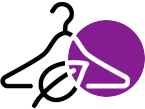
Top 8 Tips for your next Market Stall
Share
When we registered to be a vendor at the Big Vegan Market, we had no idea what we were signing up for.
The initial thrill and excitement of being accepted as a vendor quickly faded as we realised the enormity of the preparation activities.
As a new start up and one that never had any market experience, we were literally starting from scratch.
Our first place to gather information were blogs talking about markets and Google images and Etsy images of market stalls so we could begin to get ideas of what's needed and how best to set up. We read nearly everything there was to read about markets, how to prepare and the best arrangements for the day. I, personally, was devouring all content to do with markets and it was exhausting but after sometime, there were recurring themes and I could start to section the advice.
I'm going to share my Top 8 Tips and provide insight into our own experience.
Top 8 Tips
1. Type of Market and consider your Budget
My first piece of advice is to research what type of markets would best suit your service or products and make a note of when they are held. Look out for fine print as some markets are very specific and state you can only be a vendor if your goods are completely handmade and local. Whilst we qualify for the handmade, many of the smaller markets we could not consider as our products are made overseas in developing countries where we support local artisans and workers and help to break cycles of poverty.
Our brand qualified for the larger markets such as the Big Vegan Market but this involved quite an outlay just to register.
Take the time to list out the markets your are interested in and then work out the costs involved for each market. Don't just write the registration cost but other items as well such as display costs (ie. shelving, table, table cloth etc) signage and marketing material such as flyers, any giveaways you plan to do or market specials which may eat into your margins.
Once you have a list of the markets you'd like to attend through the year and you understand the costs, start to budget for these expenses by setting aside a portion of your profits to cover these costs.
2. Pricing & Display
You should be offering more than 1 product category at markets. People want to see variety and are eager to check out all that you have to offer. In saying that, there is a pricing strategy that goes with product offering. Make sure you are offering items at both ends of the scale as you will have a diverse range of buyers - those who are looking for more affordable items and those who are willing to pay top dollar for your premium products or services.
We brought with us all our current range which included 4 product categories and within each category, we had numerous styles and colours at different price points. It certainly worked well as people who came to look at our stall lingered longer to see all that we had to offer.
Ensure that your display is inviting and balanced. Make it eye catching and easy for your customers to see everything and not over accessorised or cluttered. Make items clearly visible, keep it full of product and make sure they can see the prices clearly.
3. Signage
There's so much going on in markets, especially large markets where you are competing with many vendors for attention. Signage is a must to stand out and grab people's attention. This also goes a long way to brand recognition. People may not buy from you on the day but you want them to be able to recall your brand when they are ready to make a purchase. Make sure your brand name is visible throughout the stall.
We had it as a runner on the table, a large backdrop sign featuring our logo, on all our pricing and we had marketing material that people were free to take with them on the day. On all your marketing material, make sure you have included your website address so they know where to find you when they are ready to make the purchase.
We pre-prepared carry bags with our marketing material which really helped. It saved time, especially during our busy periods and we knew the customer walked away with our beautiful product but also flyers letting them know how the product was made, by whom and why we exist as a brand. All this points back to being front of mind for the customer and the more they know about you, your brand, what you stand for, the more willing they are to make the purchase.
4. Payment options
Interestingly, many of our purchases were made on card and only a few with cash but, we were able to offer both options. It came in very handy as a couple of customers didn't have money on their card to cover the whole cost of the product and asked if they could split it between cash and card. If we didn't have those options, we most certainly would have lost both sales.
If you are offering to take cash, make sure you have brought enough change with you as there's nothing worse than receiving a $50 note for a $12 product and then having to run around and ask another vendor for change.
5. Customer Psychology
This was huge for us - really interesting to watch people's behaviour and to learn from it. What we noticed is that during times when no one was at our stall, people would just walk straight by and not bother taking a look.
But, the moment even just one person was looking at our items, they would attract a swarm of people and we'd find quite a few cramming around our stall. The mere fact that someone, even just one person, stopped at our stall made other people feel they could be missing out or think - I wonder what's there?
During the quiet times, my husband would take the opportunity to go around to the front of the stall and fix up the display, ensuring everything was aligned and looking perfect. His presence alone, in front of the stall would time and again bring in other people to take a look and that "taking a look" would at times result in sales.
Customers love to be greeted - just a warm hello is enough to show that you acknowledge them and that you're here to help if they have any questions. Make sure you come across as approachable, friendly and helpful. Remember you are the face of your brand and the more positive the interaction with you, the more positive they will feel about your brand.
6. Know your products
People at markets want to come and chat with you. It is really interactive. They want to get to know you, enquire about your brand, its values and what sets you apart. Some even asked us the "Why" of our business and it was great to talk to them, confirming why we started the brand, what it means for us, and the impact it's making on the lives of other people. All this links back to brand perception and I know I've said it before but it's so important to make sure every interaction is positive.
Even though we had marketing material for each of our product categories explaining how our products are made, people still wanted to come up and ask the question. Some may be holding the flyer in their hand, however they preferred to chat about the product and the manufacturing process.
Which is why it's really important to understand and know all aspects of your product - especially if you outsource production. It links to credibility, shows your passion for the product and recognises you as an authority on the product or even the product category.
BONUS: Interacting with the customers also provided feedback on the products. For example, although we sold out of our wallets during the event, we learned that customers were looking for a coin purse option for the wallets. This was so interesting to us as we assumed there's really no need for coin purses any more as most people just use card. This piece of feedback was golden and has now allowed us to order wallets with coin purses from our supplier to add to our range.
7. Take a friend
If you are in business by yourself, make sure you take a friend along with you on the day. This is very important, especially if you are at events that are long days. It makes the day go quicker and allows you to take a break and wander the market yourself and even network with other vendors.
Whilst your friend is manning the stall, make sure you rest up, take a seat and have a coffee or eat some lunch to fuel your body for the next half of the day.
8. Have FUN!
Most importantly - Have FUN! Don't get too anxious or stressed about the day. Just remember, it is an experience and there is great learning coming from the event. If you're purely online, it's a great opportunity to mix with your customers face-to-face and learn more about your ideal customer, what they are looking for and any feedback they may have on your current range.
What I learned is that the brand exposure is invaluable. Post the event we had many people messaging us directly, visiting our website and enquiring about our latest range of Leaf Leather products. I'm sure not all of them made a purchase on the day but they were exposed to our brand in a positive way.







